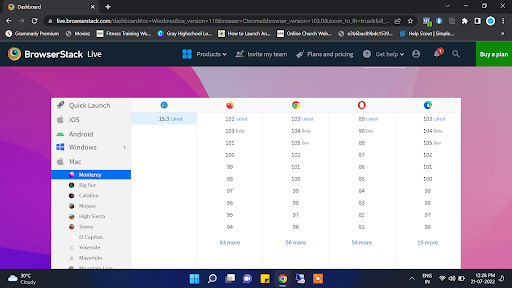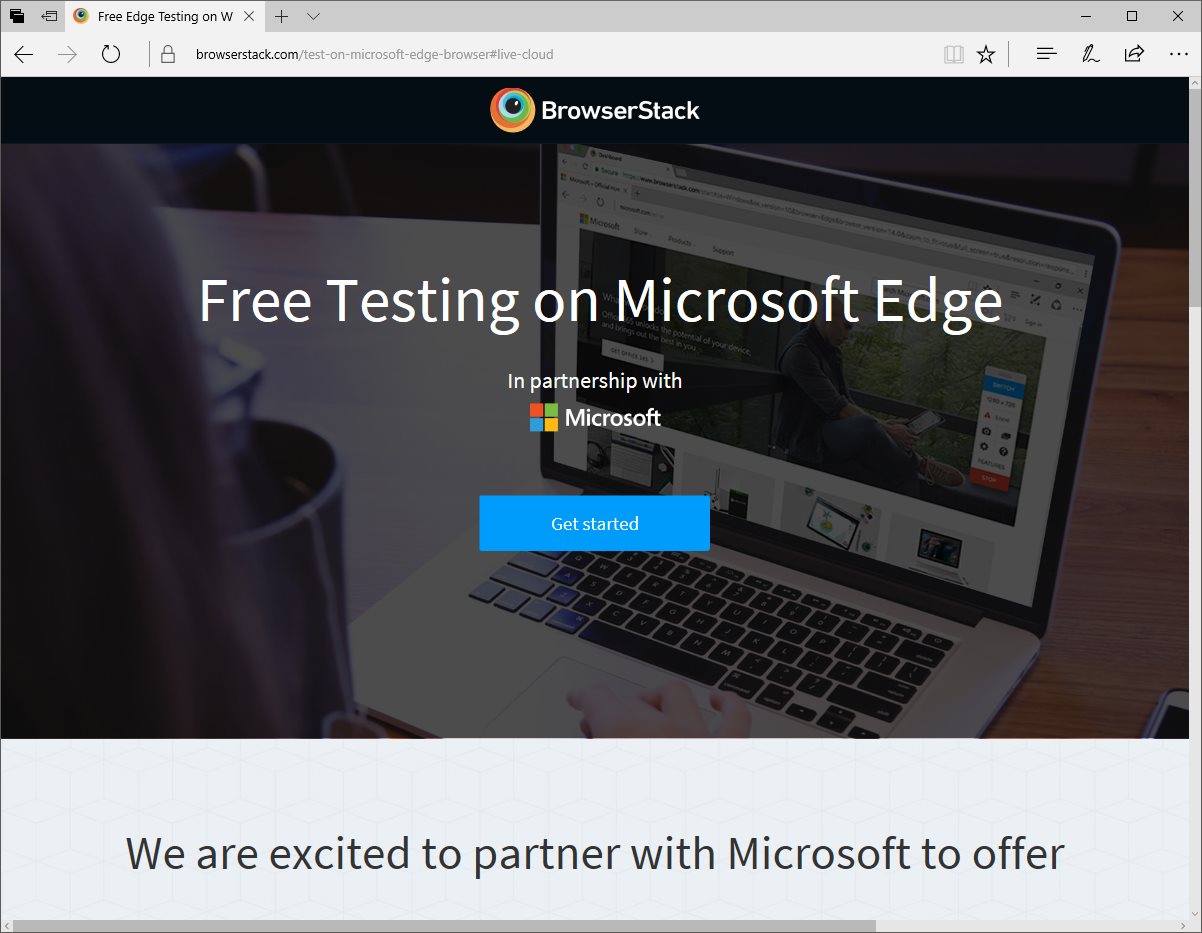
In this script I’m assuming your plan is limited to one parallel test at a time, if you’re lucky enough to have a plan with a higher limit, you can group multiple browsers in the browsers array. Method 2: Using a Real Device Cloud for Mobile Website Testing. You can also launch a Live session from the BrowserStack Local app. Local Testing is enabled for your Live session. The tests run sequentially, only after one test is finished, the next one is started. Method 1: Using Mobile Emulation in Chrome. If you have the app installed, Local Testing is enabled for your Live sessions. For modern browsers, we recommend using other. In the for loop we’re starting a new TestCafe test for each browser in the list. BrowserStack is a cross-platform browser and app testing tool that uses real devices (not emulators and simulators). Browser launchers for web test runner to run tests remotely on Browserstack.


In the shell script above you can see an array of browsers in which we want to test in. So if you’re not on a super fancy 1,200 $ / month plan which does support running 12 automated tests in parallel, you end up with an error message like the following.īrowsers =( 8" 10" 10" 10" 10" 10" 10" 10" 10" 10" X El Capitan" X Sierra" ) for i in " $ " test/acceptance/ -app 'http-server demo/ -p 1337 -s' done

As we’ve learned before, regular BrowserStack plans only support to run one automated test in parallel. The problem with this approach is, that TestCafe want’s to save you time and starts all the tests in all the browsers in parallel and it expects all the browsers to be connected.
BROWSER STACK TESTING HOW TO
What you can see above is the usual way of how to start a TestCafe test with a list of all the browsers you want to test in. Testcafe X El X Sierra' test/acceptance/ -app 'http-server demo/ -p 1337 -s'


 0 kommentar(er)
0 kommentar(er)
